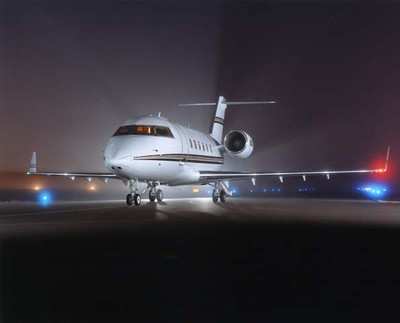Sun, Jan 31, 2016
Duncan Aviation Receives Authorization To Complete Installations
Under an STC recently granted by the FAA, Duncan Aviation has completed an industry-first Controller Pilot Data Link Communications/Future Air Navigation System (CPDLC/FANS) 1/A+ installation. The STC covers the Challenger 601. The installation features the upgraded NZ-2000 Honeywell Flight Management System (FMS), which integrates with current Challenger 601 Original Equipment Manager (OEM) flight decks.

“Our installation is unique in the industry,” says Regional Avionics Sales Manager Mark Francetic. “All other FANS FMSes on the market for the Challenger 601s are standalone units, but Duncan Aviation is installing an integrated Honeywell FMS, which is superior to any of the CPDLC/FANS 1/A+ solutions currently available. This upgraded Honeywell FMS satisfies all current NextGen mandates for FANS/CPDLC, and is an integral part of our ADS-B OUT, and WAAS LPV programs. Additionally, it’s a far more affordable option than the standalone systems currently available.”
This CPDLC/FANS 1/A+ upgrade also demonstrates Duncan Aviation’s commitment to its customers to keep their aircraft flying in airspace around the world.
“Duncan Aviation is developing solutions for these aircraft, along with all others, well before the mandate deadlines prevent aircraft that are not properly equipped from flying in desired airspace,” says Avionics Tech Rep Chris Christianson. “By doing these upgrades and modifications now, we also hope to eliminate the ever-growing issue of obsolescence with regard to aging avionics systems that will soon or already face being sunset.”
The Honeywell system integrates with current Challenger 601 flight decks and is forward-fit compatible with future mandates.
“We’re committed to offering our customers cutting-edge solutions, and one of the reasons this Honeywell system is superior to anything else out there is that it is designed to accommodate future mandates we may see for United-States airspace,” says Francetic. “We’re anticipating mandates for ADS-B IN and an updated version of Link2000 and CPDLC in the United States. Right now, these systems are used primarily when flying over water and through EU airspace, but when future mandates are issued for U.S. airspace, this Honeywell system will already be ready for the upgraded equipment.”
(Source: Duncan Aviation news release. Challenger 601 pictured in file photo)
More News
“This vote sends an undeniable message to Air Transat management: We are unified, resolute, and have earned a contract that reflects today’s industry standards, not the>[...]
Aero Linx: Beech Aero Club The Beech Aero Club (BAC) is the international type club for owners and pilots of the Beech Musketeer aircraft and its derivatives, the Sport, Super, Sun>[...]
While Landing In The River, The Extended Landing Gear Contacted The Water And The Airplane Nosed Over, Resulting In Substantial Damage Analysis: The pilot of the amphibious airplan>[...]
From 2022 (YouTube Edition): Carrying the Legacy of The B-29 For Generations to Come We had a chance to chat with the Executive Director of B-29 Doc, Josh Wells, during their stop >[...]
Also: Cosmonaut Kicked Out, Airbus Scales Back, AF Silver Star, Russian A-60 Clobbered A Samaritan’s Purse humanitarian flight was hijacked on Tuesday, December 2, while atte>[...]
 Aero-News: Quote of the Day (12.07.25)
Aero-News: Quote of the Day (12.07.25) ANN's Daily Aero-Linx (12.07.25)
ANN's Daily Aero-Linx (12.07.25) NTSB Final Report: Lafferty Jack Sea Rey
NTSB Final Report: Lafferty Jack Sea Rey Classic Aero-TV: The B29 SuperFortress Doc - History in Flight
Classic Aero-TV: The B29 SuperFortress Doc - History in Flight Airborne 12.08.25: Samaritans Purse Hijack, FAA Med Relief, China Rocket Fail
Airborne 12.08.25: Samaritans Purse Hijack, FAA Med Relief, China Rocket Fail



